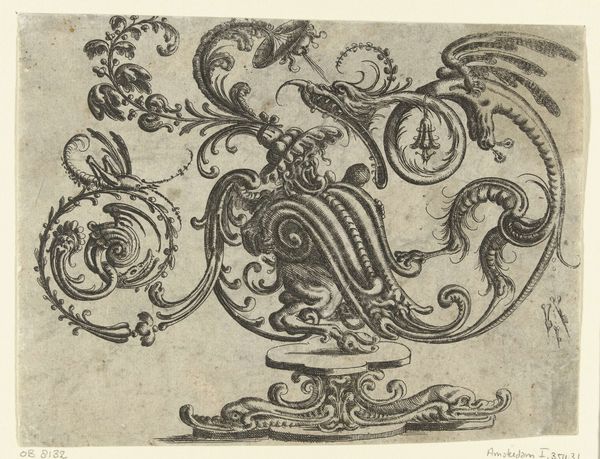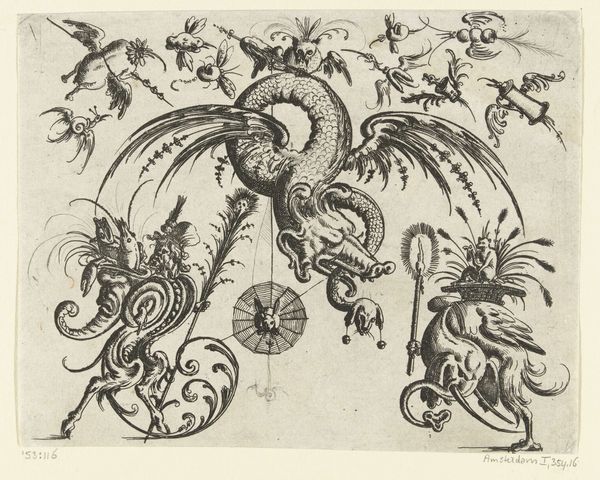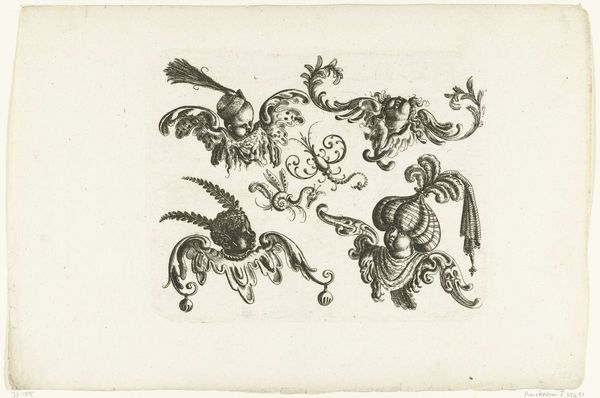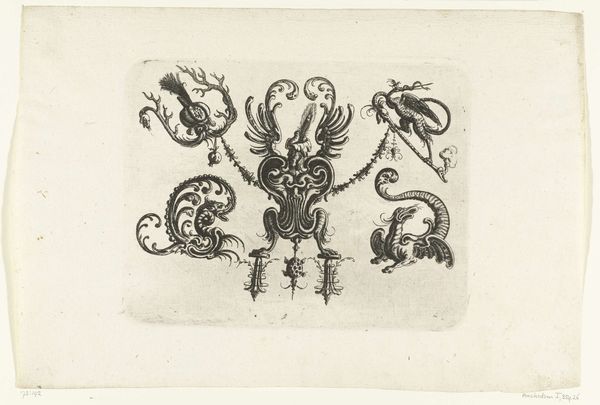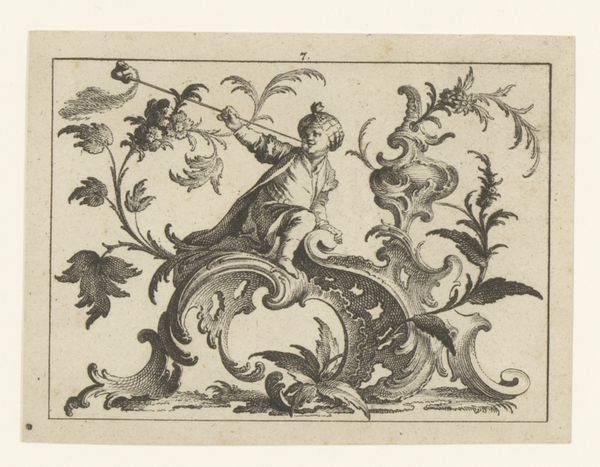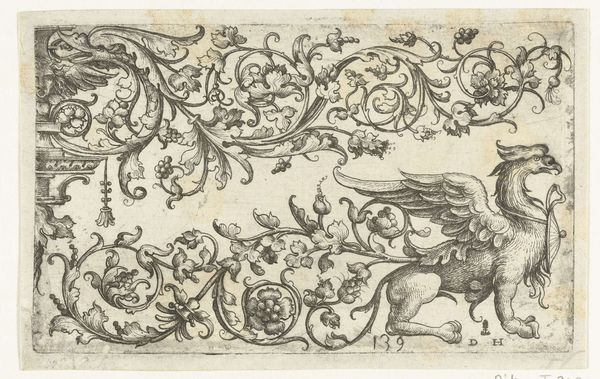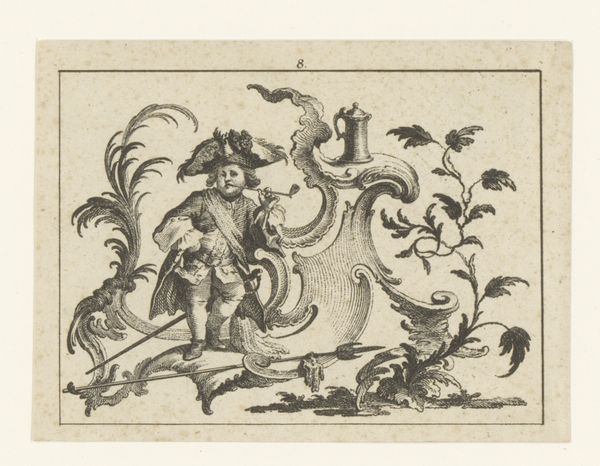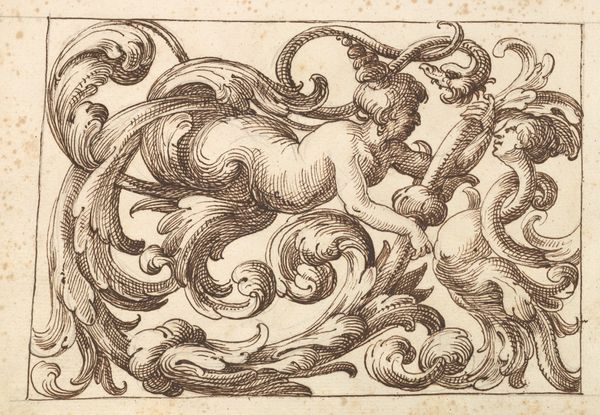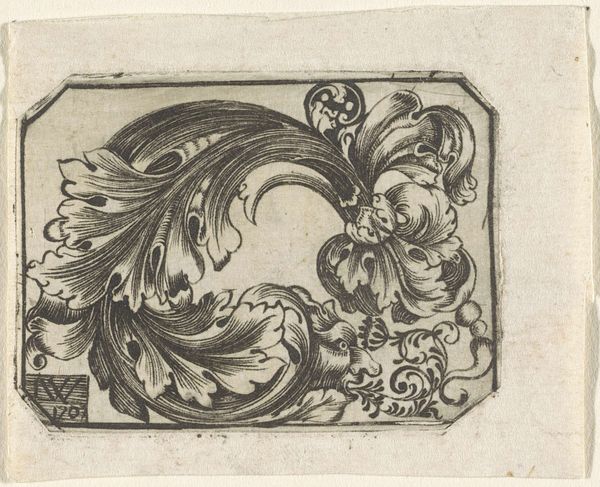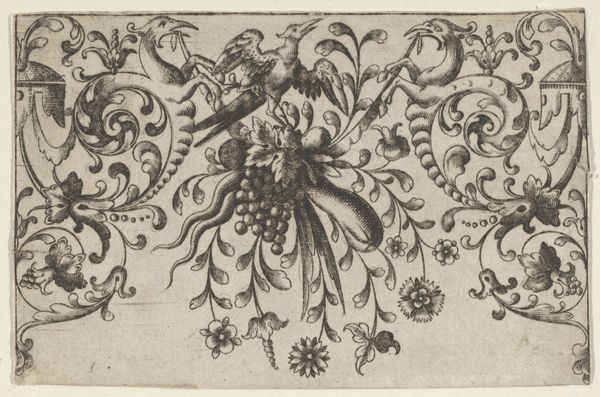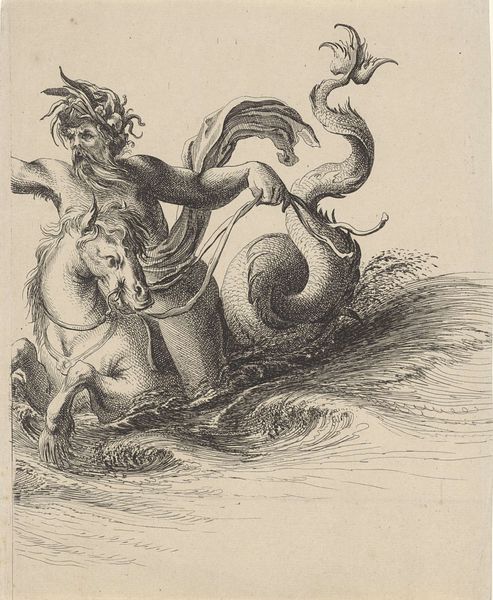
print, engraving
#
allegory
#
baroque
# print
#
figuration
#
engraving
Dimensions: height 127 mm, width 152 mm
Copyright: Rijks Museum: Open Domain
Editor: This is "Putto, rijdend op een dolfijn," or "Putto Riding a Dolphin," an engraving by Christoph Jamnitzer, dating sometime between 1573 and 1610. I find the composition so elaborate, almost excessive. What social commentary can we unpack from this piece? Curator: It's precisely that excess we should address! Think about the socio-political context of the late 16th and early 17th centuries. Europe was grappling with religious reformation, the rise of mercantile capitalism, and burgeoning colonialism. This print, teeming with allegory, reflects the anxieties and aspirations of the elites within that society. What do you see as the relationship between power, status and identity displayed in Jamnitzer's design? Editor: I suppose the putto and the dolphin could be seen as symbols of power and control. The putto, representing innocence and purity, dominating the sea creature… Is there a connection with colonialism that you suggest? Curator: Precisely. The dolphin, a creature of the sea, can be interpreted as a symbol of the ‘New World,’ tamed and ridden by a European figure. These allegorical figures reinforced existing power dynamics and helped to construct a European identity predicated on dominance, even ‘innocent’ dominance. Where does this lead you, if anywhere, regarding Jamnitzer’s intentions or purpose with this piece? Editor: It gives me a different view, a much more complex interpretation than my first reaction. Curator: And, how does this apply to contemporary society, do you think? Editor: I think this reveals how art served and continues to serve complex social and political agendas. The themes resonate with modern issues related to power, gender and historical narratives.
Comments
No comments
Be the first to comment and join the conversation on the ultimate creative platform.
